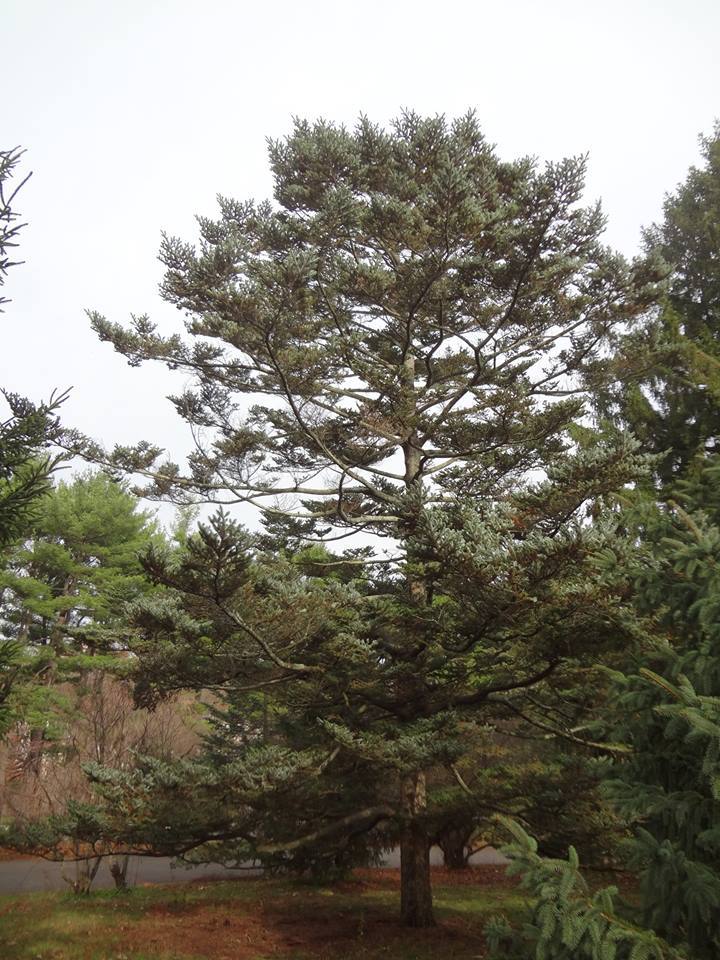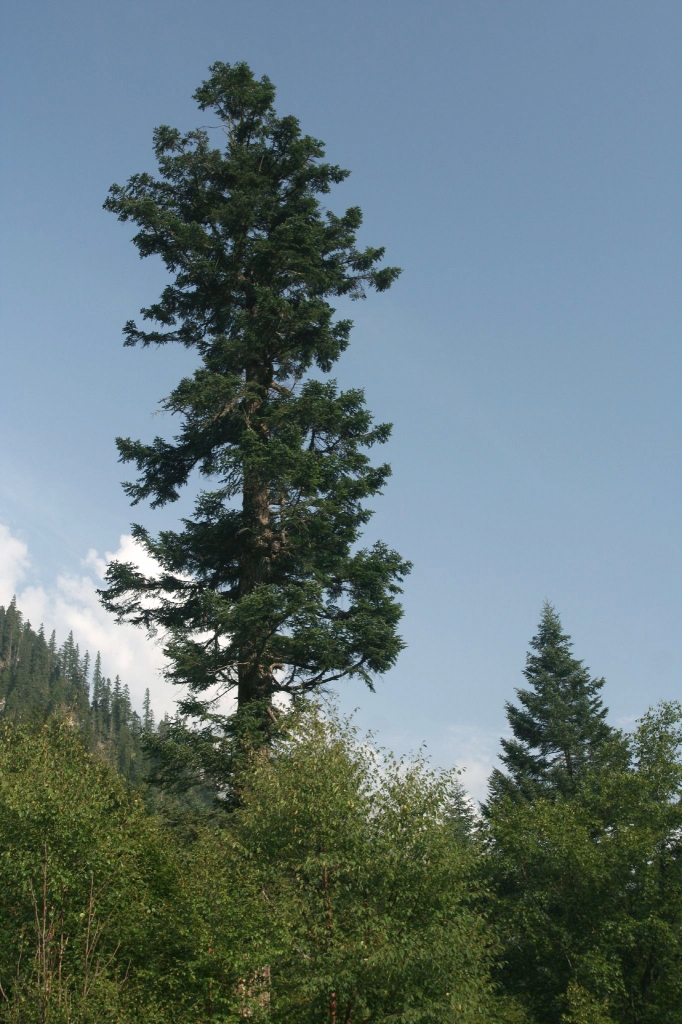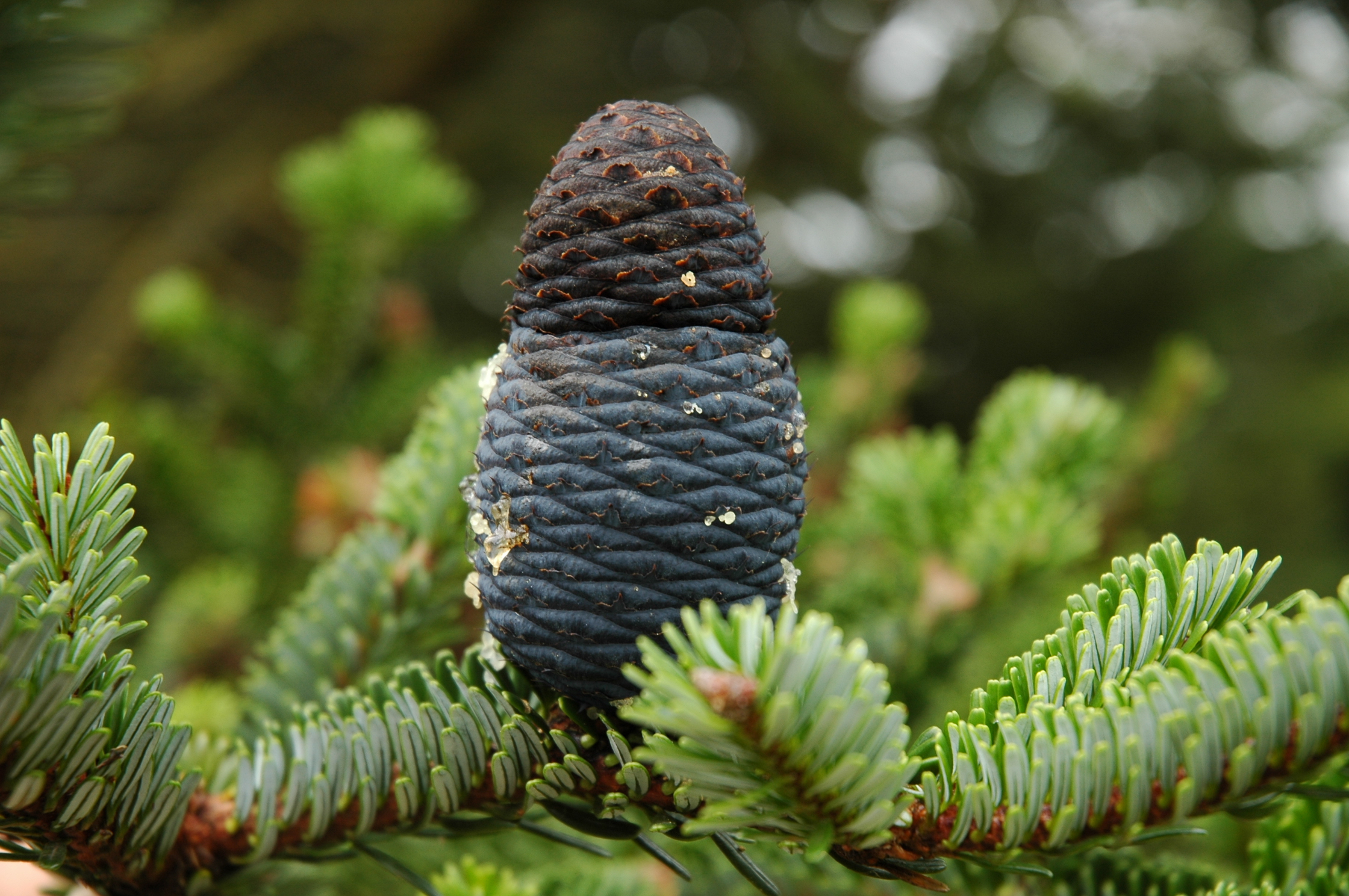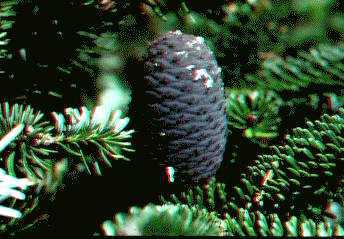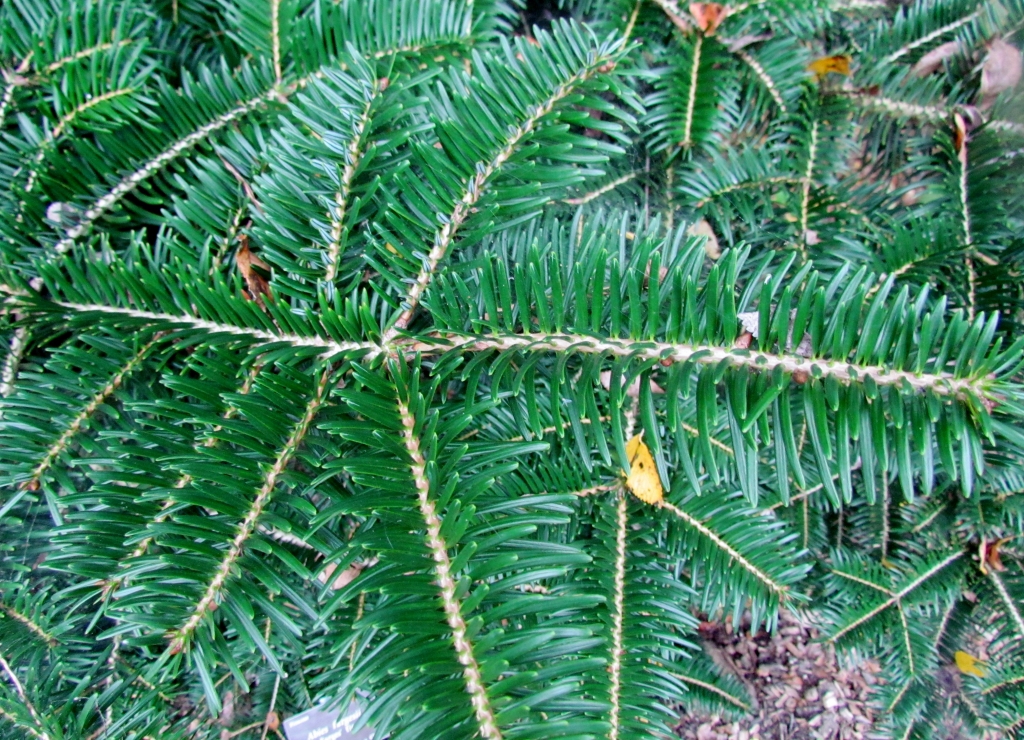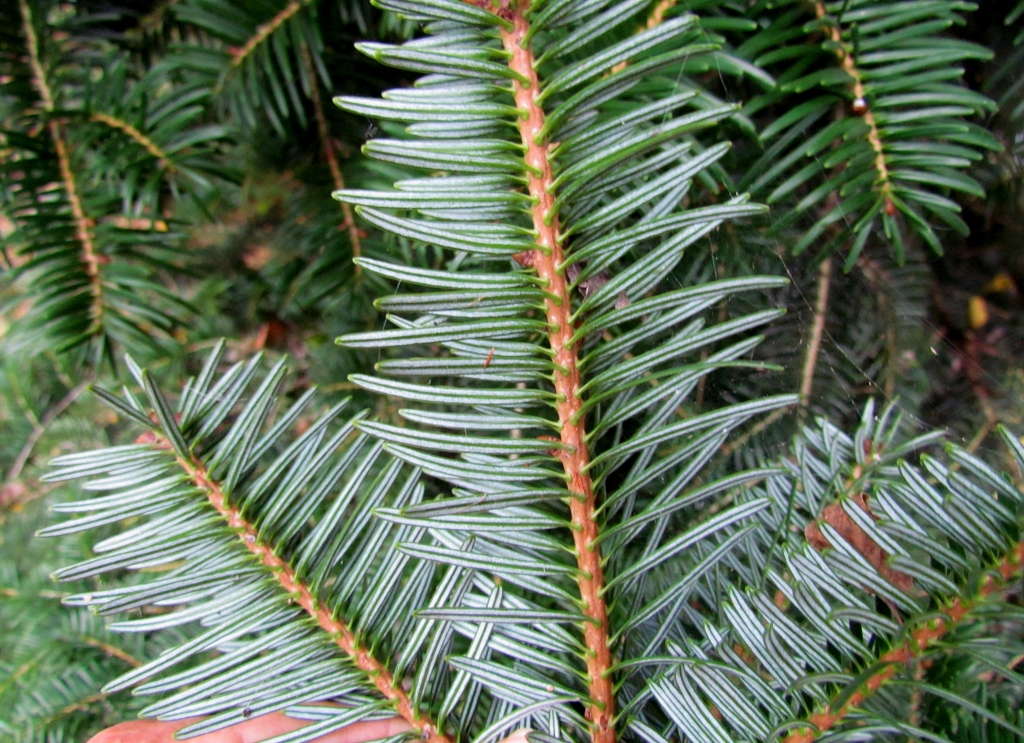Abies fargesii, as described in 1899 by Adrien René Franchet (1834 - 1900), in Journal de Botanique (Morot) vol.13 no.8 is commonly known as Farges fir in the English language, as well as Š·´Š±±Š†·æ‰ (bashan lengshan) in Chinese. Franchet named it after the French missionary, botanist and plant collector, Paul Guillaume Farges. It should be noted that the closely-related A. fanjingshanensis may also prove to be a variety of A. fargesii.
There are three recognized varieties:
- Abies fargesii var. fargesii, the typical variety which is described here.
- Abies fargesii var. faxoniana
- Abies fargesii var. sutchuenensis
Description. Farges fir is an evergreen coniferous species of tree which will grow to a mature height of 130 feet (40 m) tall with a 60 to 80 inch (150 - 200 cm) diameter, measured at breast height.
- trunk is cylindrical.
- First-order branches are massive, short, and sparse. Second-order branches spreading, assurgent, or pendant below.
- Its crown is narrowly-pyramidal or conical in structure.
- Bark is smooth, gray, and finely-flaky on young trees, becoming gray-brown, scaly, and fissured on older trees.
- Branchlets are smooth, shallowly grooved, and slightly pubescent within the grooves and are reddish brown, purplish or 'mahogany' (variable) in color.
- Foliar buds are ovoid to broadly obtuse, measuring 0.24 to 0.3 inch (6 - 8 mm) long and 0.16 to 0.2 inch (4-5 mm) wide, slightly resinous and purple-red. Bud scales are triangular-ovate and yellowish-brown in color, persisting for several years.
- Leaves are spirally arranged, crowded in several overlapping ranks of unequal length. The lower leaves are spiny and held upright on coning shoots, 0.4 to 1.8 inches (1 - 4.5) cm long by 0.08 to 0.14 inch (2 - 3.5 mm) wide, twisted at the base, stomata below in two bands divided by a midrib; shining green above, whitish- or glaucous-green below.
- Pollen cones are yellow with red microsporophylls, cylindrical, 0.5 inch (13 mm) long by 0.2 inch (5 mm) wide, crowded and axillary near the shoot apex.
- Seed cones are bluish-purple when young, maturing to purplish- or reddish-brown, ovoid-oblong or broadly cylindric, 2 to 3.5 inches (5 - 9 cm) long by 1.2 to 1.6 inches (3 - 4 cm) broad with very short peduncles.
- Seeds are oblong and black, measuring 0.2 inch (5 - 6 mm) long by 0.12 to 0.15 inch (3 - 3.5 mm) long with the black, cuneate, oblique wing.
Distribution. This species is native to central China - Gansu, Henan, Hubei, Shaanxi, and Sichuan provinces. It grows in mountains and river basins at altitudes between 5,000 and 12,800 feet (1,500 - 3,900 m) above sea level.
Abies fargesii is a timber tree used in construction and for pulp.
